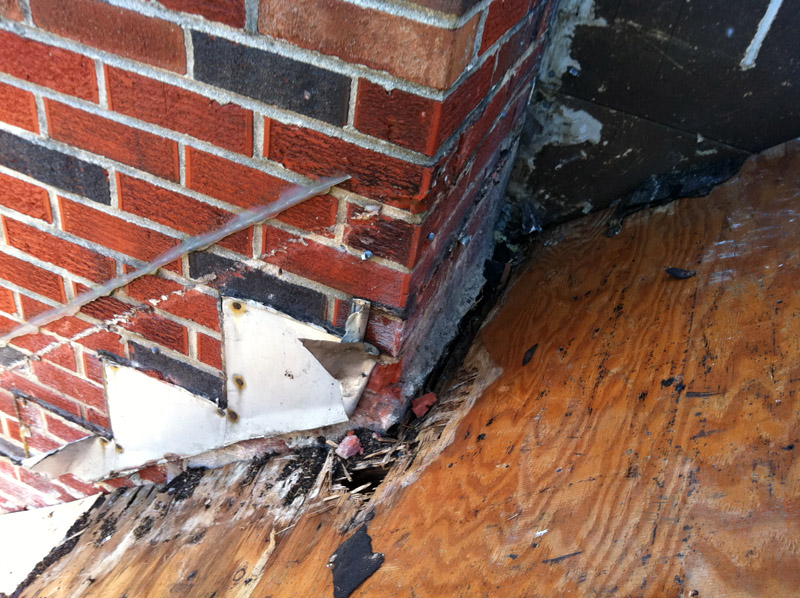
The causes of leaking chimneys can usually be narrowed down to five reasons. If the problem isn’t solved by addressing the items on this list, the leak probably isn’t from the chimney! Herewith some of the causes that most certainly comes from the chimney.
1. Rain Going Straight In from the Top
Because chimneys without covers get a lot of rain falling straight down into them, it’s not hard to picture the situation. A chimney cover makes sense to most people. Not only does it keep the rain out, but keeps birds, animals, and debris out. The greatest value of the chimney cover is really keeping these out because when chimneys get blocked at the bottom, people get sick or even die from CO poisoning. While it’s correct that sometimes an uncovered flue is the source of water problems, most frequently this reason for a leak is only when the liner is metal.
2. Cracks in the Chimney Crown
The chimney crown is the cement part on top of the chimney. The bricks go up around the tile flue liners, but at the top something is needed to stop the rain and snow from just falling in around the tiles. This in this sense is that the very reason of the chimney crown is to remain rain out. Cracks in the chimney crown can occur from shifting of the structure or from shrinkage dating back to the first day the crown was put on. When the crown has cracks, the water goes right through those cracks.
3. Chimneys Leaking From the Inside Out from Condensation
There is a case, a house belongs to a lady whose wallpaper peeled where the chimney ran through the house. She knew it was the chimney because this is the only place with wallpaper peeling. She had tried everything namely a chimney cover, flashing, even rebuilt the entire top of the chimney. She already she’d spent thousands of dollars but nothing fixed it. This was an older house with an unlined brick chimney. In 1900 when it was built that chimney carried wood or coal smoke. Someplace along the way, a gas furnace was installed, but the chimney was not lined with a properly sized liner.
4. Chimney Flashing Causes Leaks
The flashing is what keeps water from going into the place where the brick structure comes through the roof (or otherwise comes close to the roof.) There’s a fairly huge gap between the bricks and the roof and water will pour through that hole if it’s not sealed up. Flashing is frequently aluminum that goes in between a couple bricks and bends to go on top of the shingles. Some sort of water proof “stuff” seals those spots. Though it’s far from the best choice, the “stuff” is often tar. In any event, flashing doesn’t last forever and the tar lasts even less time.
5. Chimney Leaks Caused by Leaking Bricks
Bricks and mortar both pass water and repeatedly lots of it. The problem here is the similar as with the crown- the freezing and thawing all winter long with the resulting damage which causes leaks in the house.
The term of waterproofing a chimney is probably heard, however need to be careful about what waterproofing material to use. When water is absorbed into a brick or a mortar joint in the summer time, the water probably dries out after a while. The exceptions might be for a surface in the shade or on the side of the house where the sun never shines; those walls just stay wet. That water does try to escape by “falling” i.e. the water weight (or head pressure) carries it toward the ground where it forces its way out of the bricks either inside or outside of the house.
Need help with roof repair? Contact preventivesupport.com
Metal Chimney Leaking
If applying a waterproofing material that physically blocks the pores of the brick or mortar, the water is trapped inside the brick. Some bricks, in reality, get soggy, though it’s more likely that the water will just seep to the inside of the house. To the point, using silicone based water sealants may trap water and cause more damage than you started with. It is recommended to use polysiloxane type waterproofing agents, such as Chimney Saver by Saver Systems.



